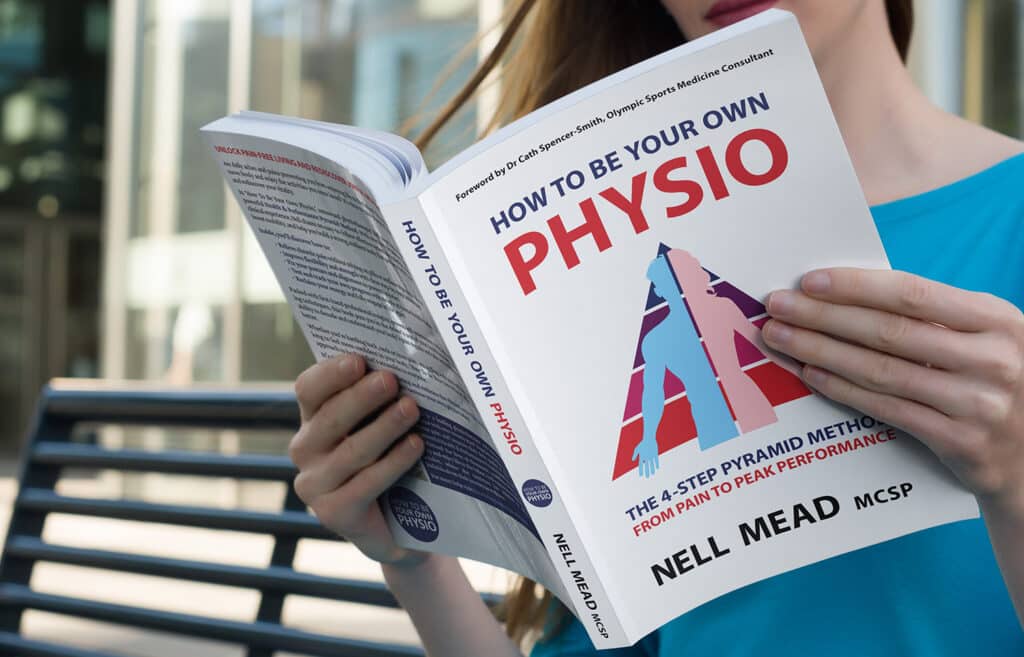In October, I started a series of blog posts detailing Sarah Key’s theory on back pain. I wrote about spinal anatomy and explained how the spine should work in a “normal” situation, and I followed that up by writing about the “stiff spinal segment” — the first of Sarah’s five stages of back pain. These posts — along with my companion pieces about Sarah’s exercises — the appeasing exercise and the back block — remain my most searched-for articles — so it’s time to continue the series! This week it’s time for stage 2: facet joint arthropathy.
You may remember that in the “normal” lumbar spine, the disc (the cross-hatched bit on the left of the picture) is supposed to bear around 84% of the load that goes through each vertebral unit, and the facet joint 16% (highlighted in pink to the right of the picture). This is dependent on the nucleus in the middle of the disc maintaining its water content, because this is what helps the disc maintain its height.
But when a disc at the front of the spine starts to lose its water and becomes dehydrated, it flattens slightly and drops in height. The disc in the picture should be taller than it is. This causes the upper and lower bones of the facet joints at the back of the spine to get closer together. The upper vertebra settles on the one below, resulting in the bones of the facet joint rubbing together, where they would have had only fleeting contact if the disc was at full height.
The immediate response is that the soft tissues of the facet joint get inflamed — and like most joints, the facet joint has its own nerve endings, so this can cause pain. This pain can often feel very sharp, and usually feels one-sided. You may feel like jabbing a knuckle or a tennis ball into the painful area (which actually isn’t a bad idea, though it won’t solve the underlying problem).
Once again, the pain in the joints results in protective muscle spasm — and because the muscles that go down the sides of the spine are vertically oriented, this causes further compression of both the disc and the facet joint. It also results in inhibition of the small multifidus muscle, whose job is really to stabilise and control the facet joint, and which I’ll discuss later. This forms a vicious circle which we need to disrupt.
The facet joint arthropathy (arthropathy = joint dysfunction) is often more painful than the stiff spinal segment, so initially the back block exercise may be too aggressive. Instead, I would generally suggest that you start with the appeasing exercise, little and often (up to 10 sessions per day) as this helps to stretch the back of the disc (thus starting the rehydration process) but also opens up the facet joint, giving it some relief from being compressed and irritated.
Bear in mind though that this is all just a discussion of what goes wrong and not why: to work out the underlying cause of your specific facet joint issue and get an individual diagnosis and treatment plan, I would always recommend getting a proper physiotherapy assessment.
To book an in-depth, thorough 90-minute physiotherapy assessment with Nell Mead, please call us on 0207 175 0150. We’ll help you to work out what’s going on, why it’s happening — and then create a plan to help you move forward.







